For most of us, it’s hard to go a day without seeing at least one bird. They fly about here and there going about their days and most of the time, we don’t really think much about what they might be doing. In this article, you will get to find out what birds do all day as you live one day as a bird.
Birds spend their day doing whatever it is they need to survive. In a typical day, they will eat, drink, sleep, poop, clean themselves, fly from place to place, and escape predators. The way in which they do these things will vary from species to species and is dependent upon their environment.
For the remainder of this post, you are going to live a day like a typical songbird. Songbirds are perching birds and make up over 60% of all bird species. Find a safe perch, fluff up your feathers and settle in, the Sun’s about to come up…
As an Amazon Associate, I earn from qualifying purchases. Birdwatch World earns commissions from Amazon and similar affiliate programs from any purchases made via links in this article.
Sunrise For A Songbird
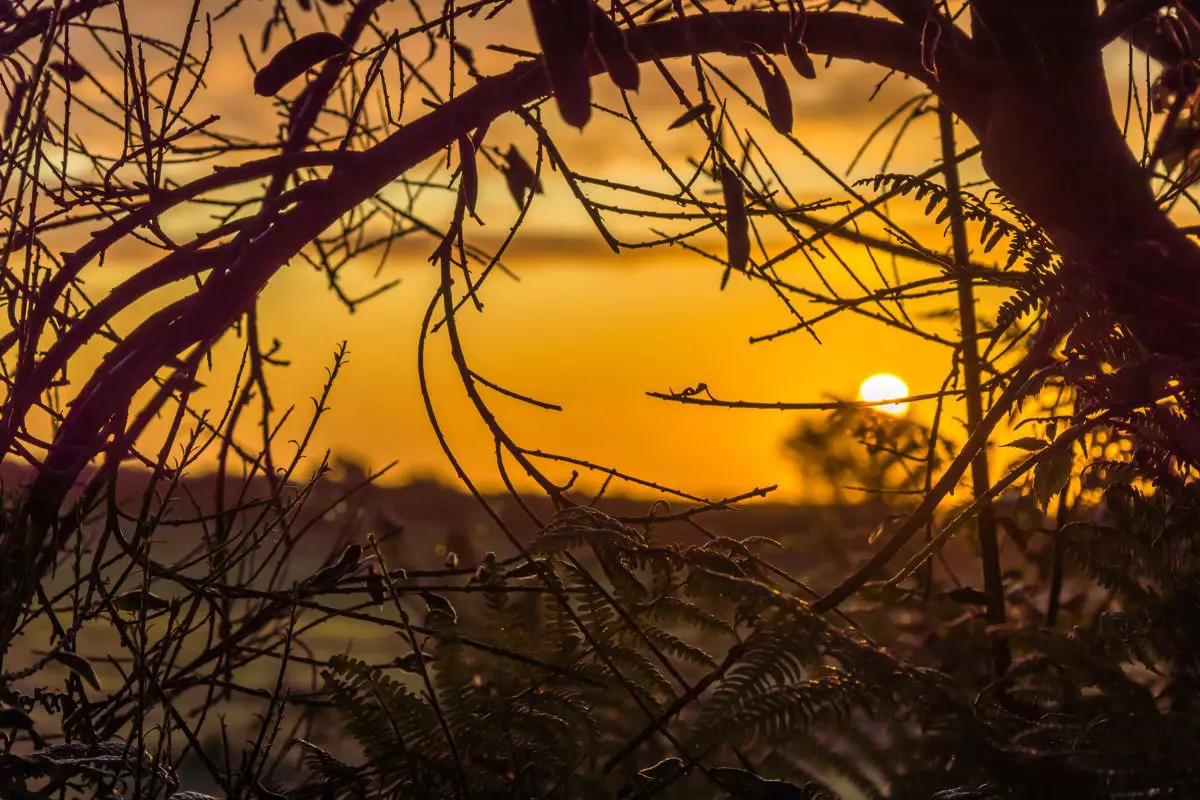
The Sun’s first light arouses you on your perch, safe and warm within the thick branches of a small bush. You feel the firm grip of your feet around the branch and the movement of the other birds of your kind that you huddled with last night. You take your first look at the day through the leaves of the bush and ruffle your feathers.
Quick preening is always necessary first thing in the morning, so you get started. Running your beak through your feathers you can feel them falling into place. It feels good to have them all in the right place, ready for flight.
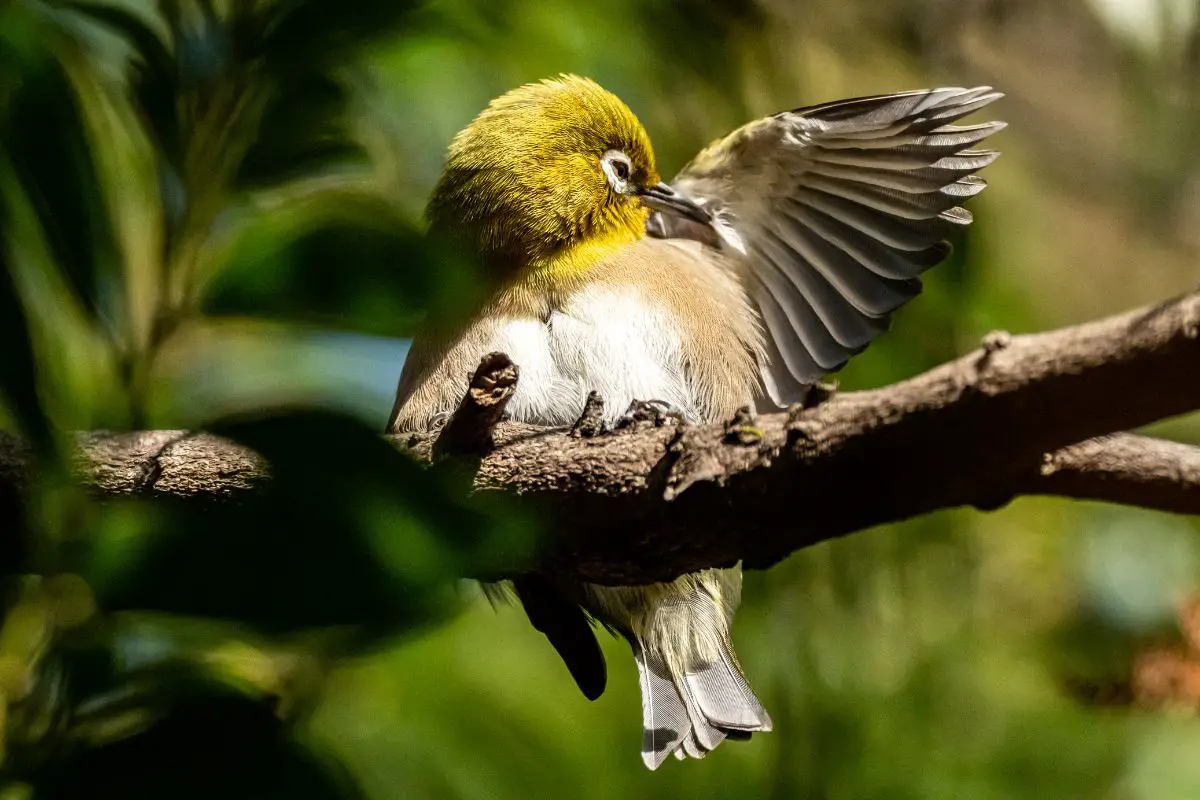
Every now and then you pause and listen to make sure that there are no predators nearby that may attack when you leave the safety of the bush. Around you, the other birds are getting busy cleaning and preparing to leave the bush too. Having them around makes you feel safe.
Satisfied that your feathers are in order, you give your wings a little flap just to make sure they feel right. You jump to the outer end of the branch to get a better look at what awaits beyond. Beside you, the first of your sleeping buddies takes flight from the cover of the bush.
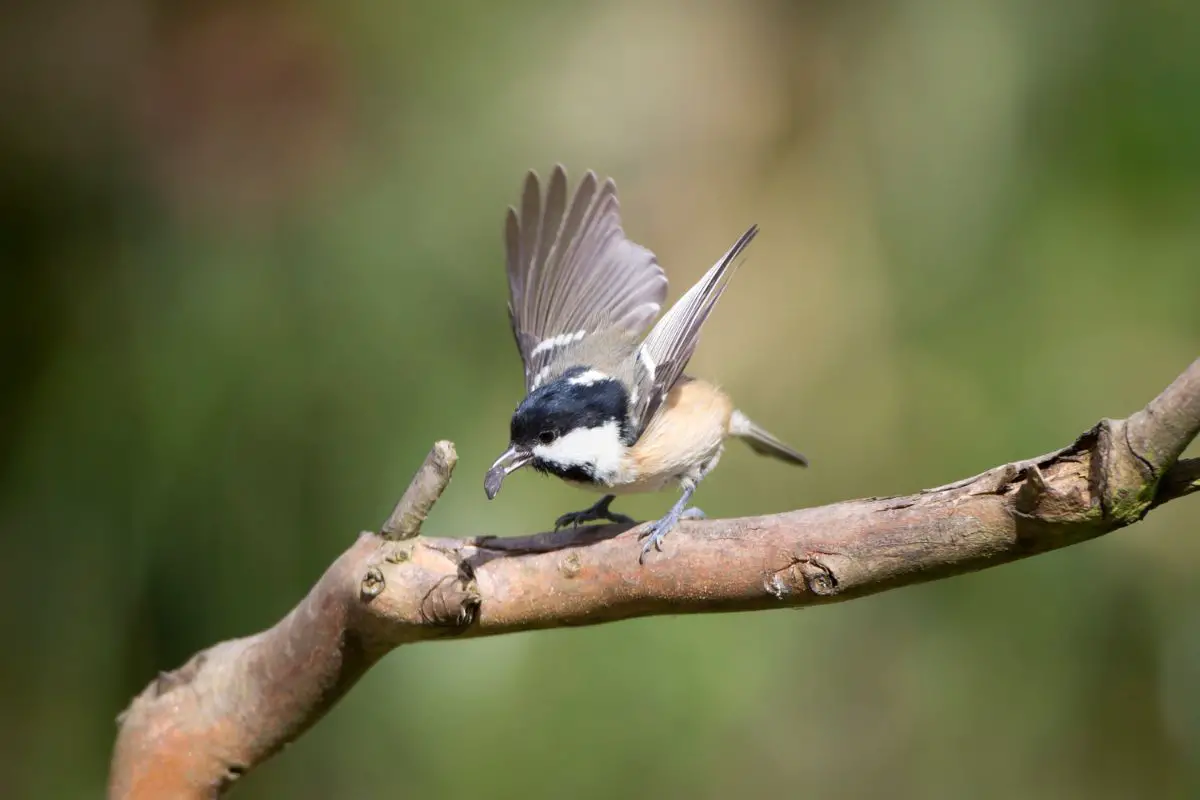
Want to know how often birds poop? You can find out in this article here on my blog.
The First Flight Of The Day
You take one last look around, pause to listen for a bit, and then push off the branch.
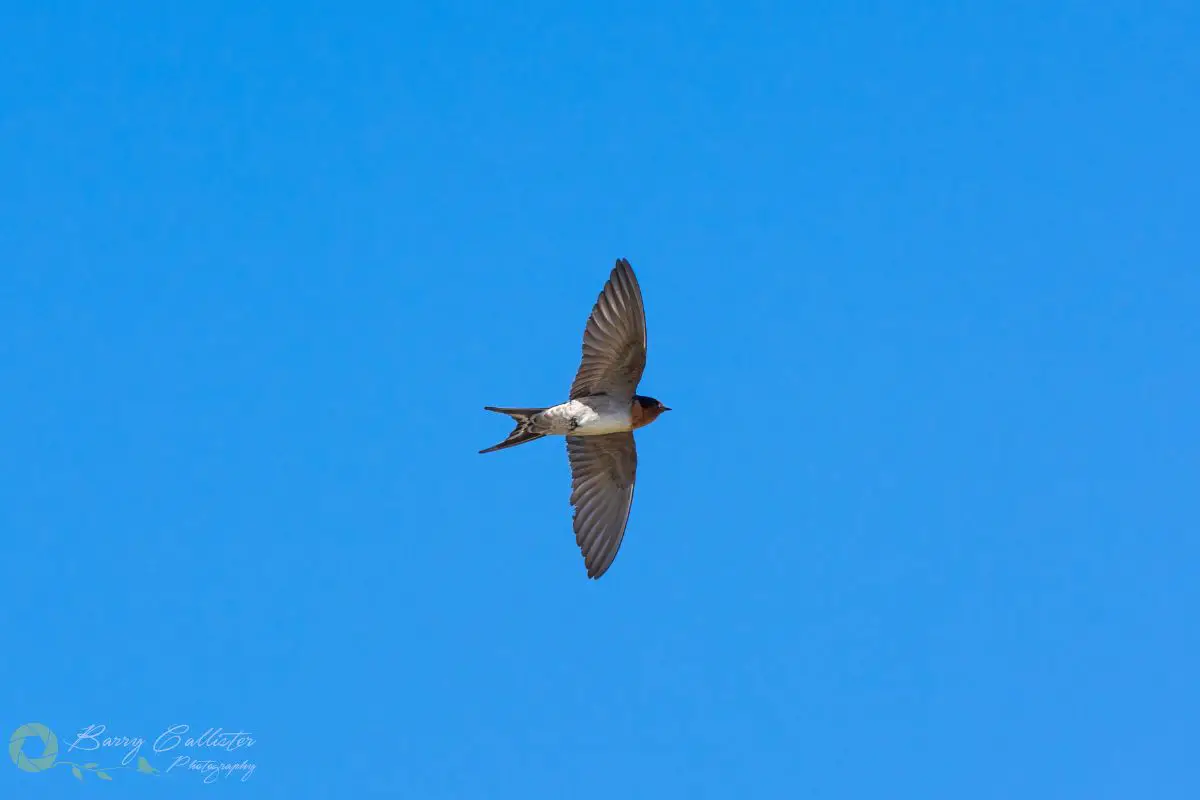
Wow, it feels so good to fly first thing in the morning. There is nothing like the feeling of the wind through your feathers. With every beat of your wings, you become more alert. The others join you and you all swoop and soar about, chirping a greeting to each other and the morning.
Warmed up, awake, and alert, it’s now time to get some food into your stomach.
Finding Breakfast
While flying around you spied some of your favorite seeds at the end of the branch of a tree below. You swoop down and land on the branch, feeling it give a little below you. This doesn’t frighten you; all you’re thinking about are those seeds. You also know your feet always lock their grip around whatever you land on as soon as you bend your legs.
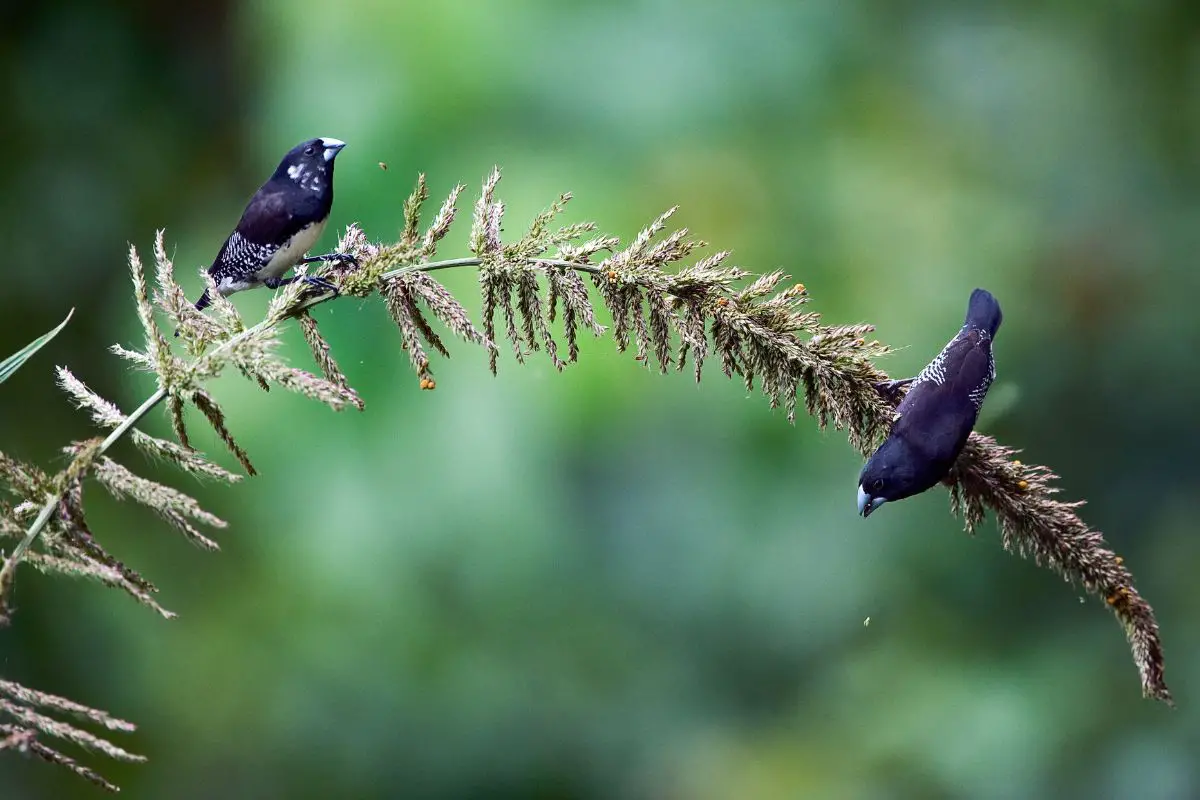
You peck the first seed from the tree and remove the husk with your beak. You’ve barely swallowed it before pecking at another one. Some of the other birds join you on the same branch. You let out a shriek just to let them know you got here first!
It’s important to be a little aggressive. Food is scarce at the moment and you want to get enough to give you energy for the day ahead.
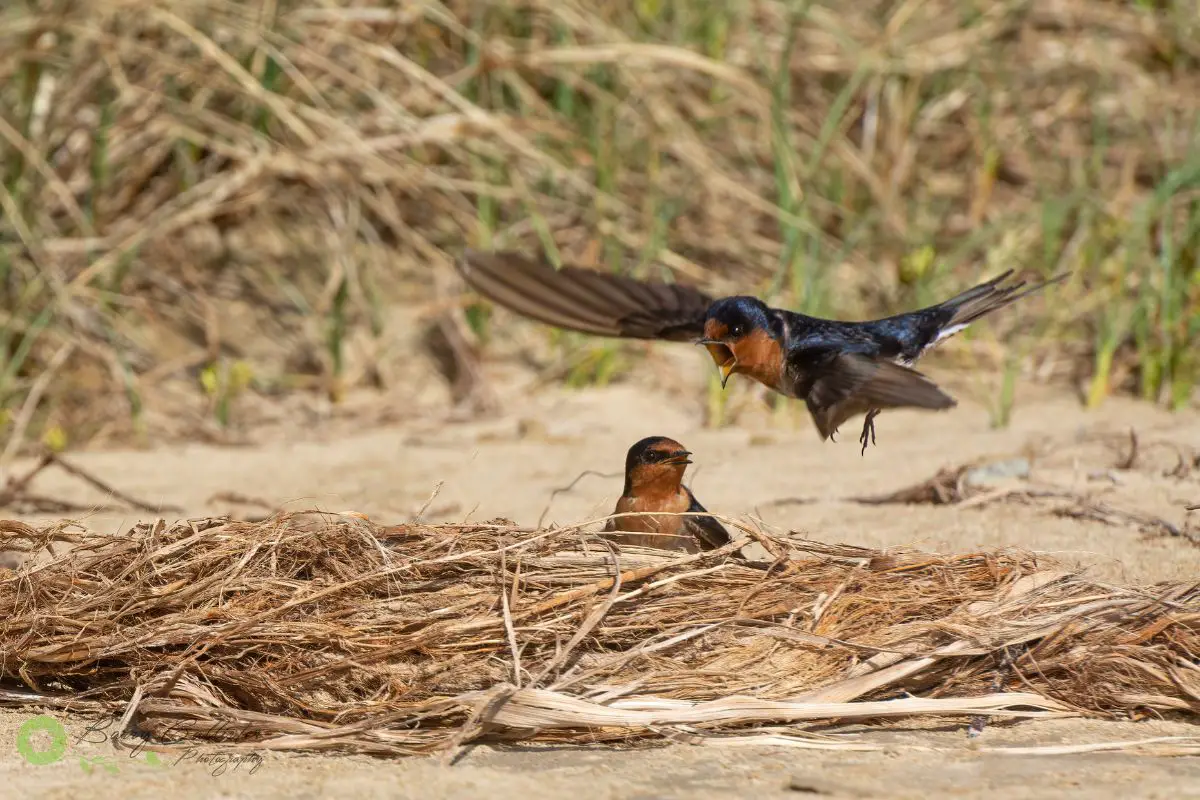
After eating all the seeds you could find in that tree, you hunt about for some insects. Some of them provide a bit more of a challenge than seed but they’re a good source of energy. It’s the little flying insects that are the hardest to catch, you have to predict their flight path and avoid obstacles to approach them at just the right angle.
The Mid-Morning
After a nice feed of seeds and insects, you feel quite satisfied. Your energy levels are high and you feel like flying. You also start to feel a bit thirsty too and decide to find some water. The insects you ate gave you some fluids but you need more hydration.
Read more about the remarkable ways in which birds find water in this post here on my blog.
You leave your perch on a rock where earlier you ambushed a nice tasty beetle and take flight to get a high perspective. It’s much easier to find water by spotting it from up high, the sun glistens off its surface and makes it stand out from the rest of the landscape.
It doesn’t take long until you notice something glistening below. You swoop down to take a closer look and land on a leafless branch above the glistening object. You must be careful to look out for predators and standing up here, you can see a wide area.
Tilting your head to get a better view, you notice that the glistening object is not water but some sort of human rubbish. It’s disappointing, you wasted a lot of energy to fly down and inspect this and now have to continue looking for water.
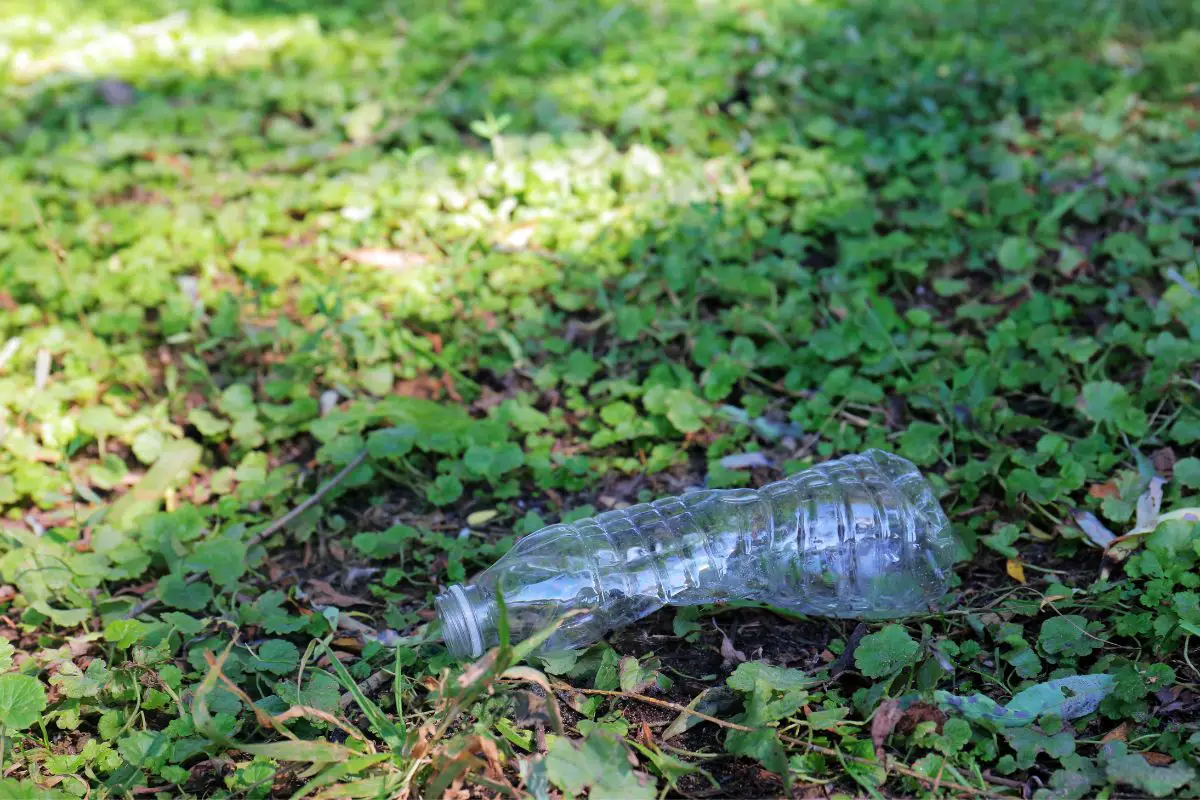
A Drink And A Bath
From up high again, it doesn’t take long to spot something you quickly recognize as a puddle of water. You find a safe perch to land on and inspect the area for predators. It’s safe so you fly down and land next to the puddle.
The water looks so good as you jump closer and plop your feet into it. You dip your beak down and scoop some up. Tilting your head back sends it trickling down your throat.
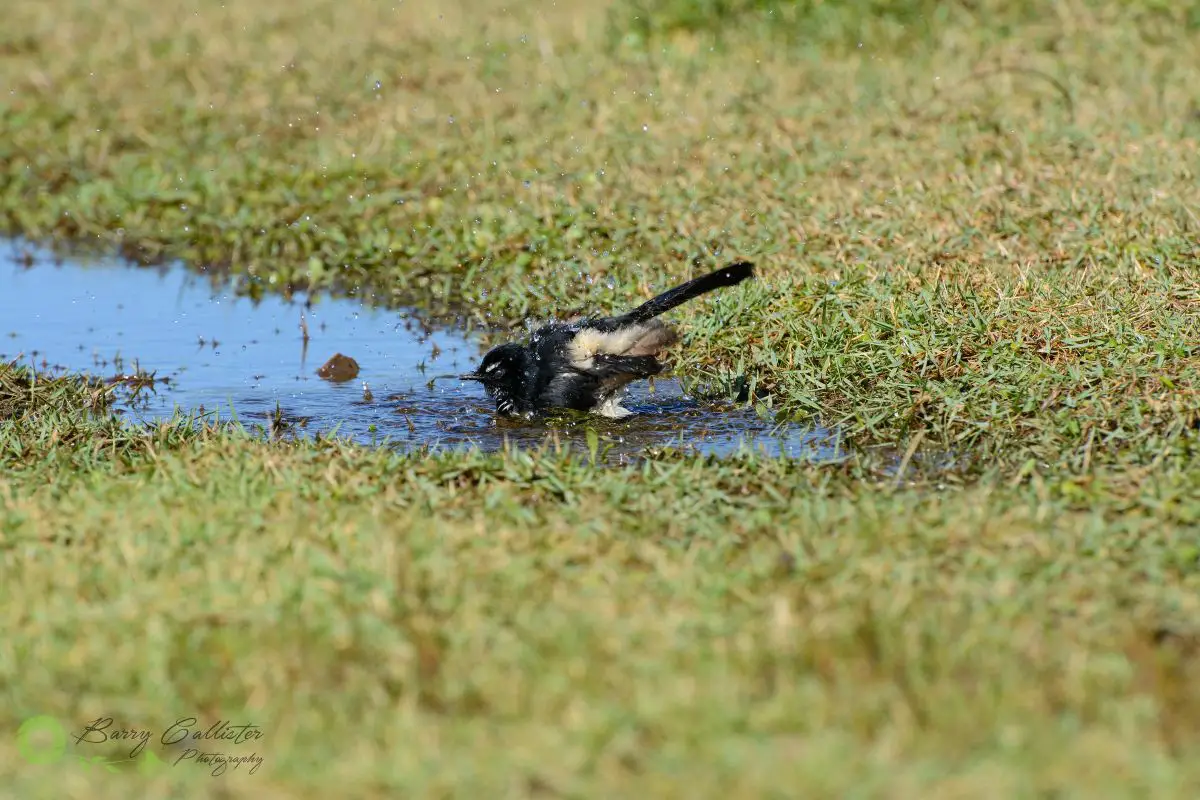
You decide to have a bath while you are here because it’s getting a bit warmer as the sun moves higher. You fluff up and dip into the water. The dust that gathered on your feathers slides off with every drop of water falling back into the puddle. A quick shake helps more water and grime to fly off.
Discover the various ways birds clean themselves in this post on my blog.
Danger From Behind?!
As you’re about to dip into the cool water once again, you hear something behind you. Quickly turning you stand frozen and look in the direction of the sound. Nothing seems to be there but something just doesn’t feel right.

Just then, a cat comes pounding out of the long grass just meters away?! You take flight quickly as a huge paw with razor-sharp claws swipes right by you, so close you feel the wind it creates. Getting height as fast as you can is the best thing to do so you climb quickly, flapping your wings so fast you feel they might fly off.
As you fly higher towards a safe perch in a tree thick with leaves, you hear the cat growling below. Your heart is beating so fast and you’re breathing is shallow and quick. That was a close one?!
Escape The Midday Heat
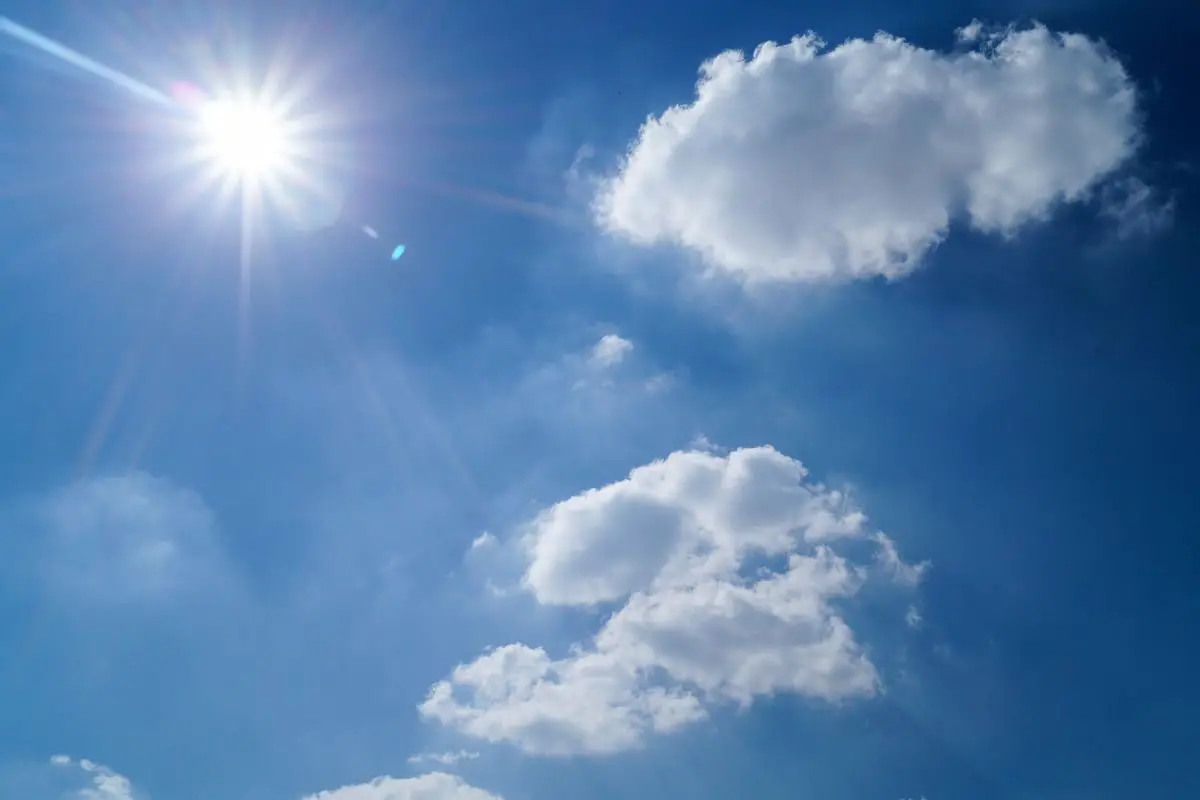
You decide to rest in the tree for a while to calm down. It was almost time to find a nice shady spot to escape the midday sun anyway. It gets so hot lately when the sun is high above your head.
Below you the cat slinks away back into the long grass as you settle in and start to calm down. Other birds start to join you in the tree, both above and below you.
It feels so good to rest after the fright the cat gave you. Escaping it used up a lot of energy and it’s good to just perch and not have to be too alert for a while. You close your eyes and drift off to sleep for a while.
The Afternoon Activities
The world looks a little different now, the sun is lower in the sky and the shadows of the trees are starting to get longer.
Later in the afternoon, you’re awakened by a desire to feed again. Nightfall is coming and you have to fill your stomach to give you the energy to stay warm through the night.
Still wary that the cat may still be about, you take care to have a good scan of the area below. After another quick ruffle of your feathers and some preening to make sure they are all in place, you take flight from your midday perch.
The Day Begins To Look Different
The world looks a little different now, the sun is lower in the sky and the shadows of the trees are starting to get longer. You get busy trying to find some food. Luckily, there are a lot more insects around at this time of day and you quickly find some flying about.
You also manage to find some grass seeds in a well-protected area. It always feels good to feed where you feel a little safer. Your mind is still on the close call from earlier in the day which has you slightly on edge but feeding here in the middle of thick undergrowth means you can relax slightly.
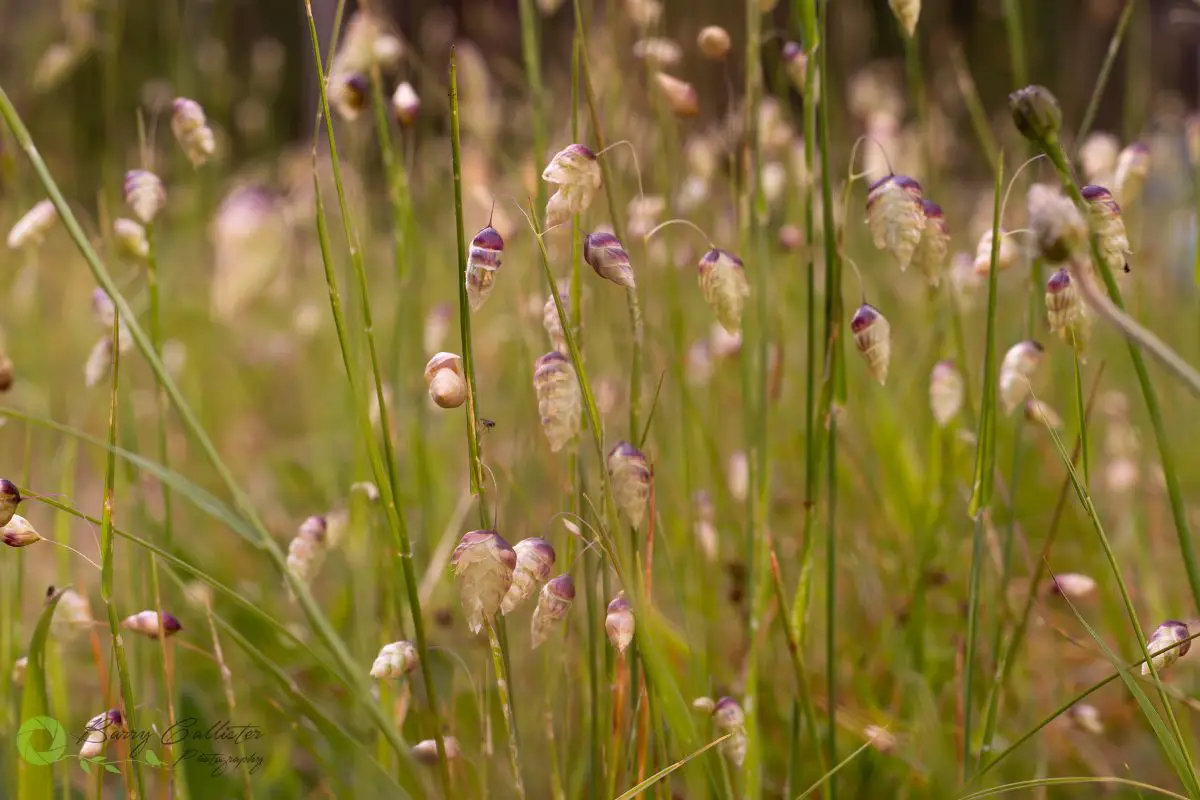
After eating all the seeds you can find, you start to scratch at the dirt in the hope of stirring up some more insects. It doesn’t take long before some small bugs start to scurry about and you quickly snap them up.
Other birds like you soon join you, having noticed your food windfall. You are not too concerned with them being around this time as it’s late in the day and you need to conserve energy. You also realize there is enough food here for all of you.
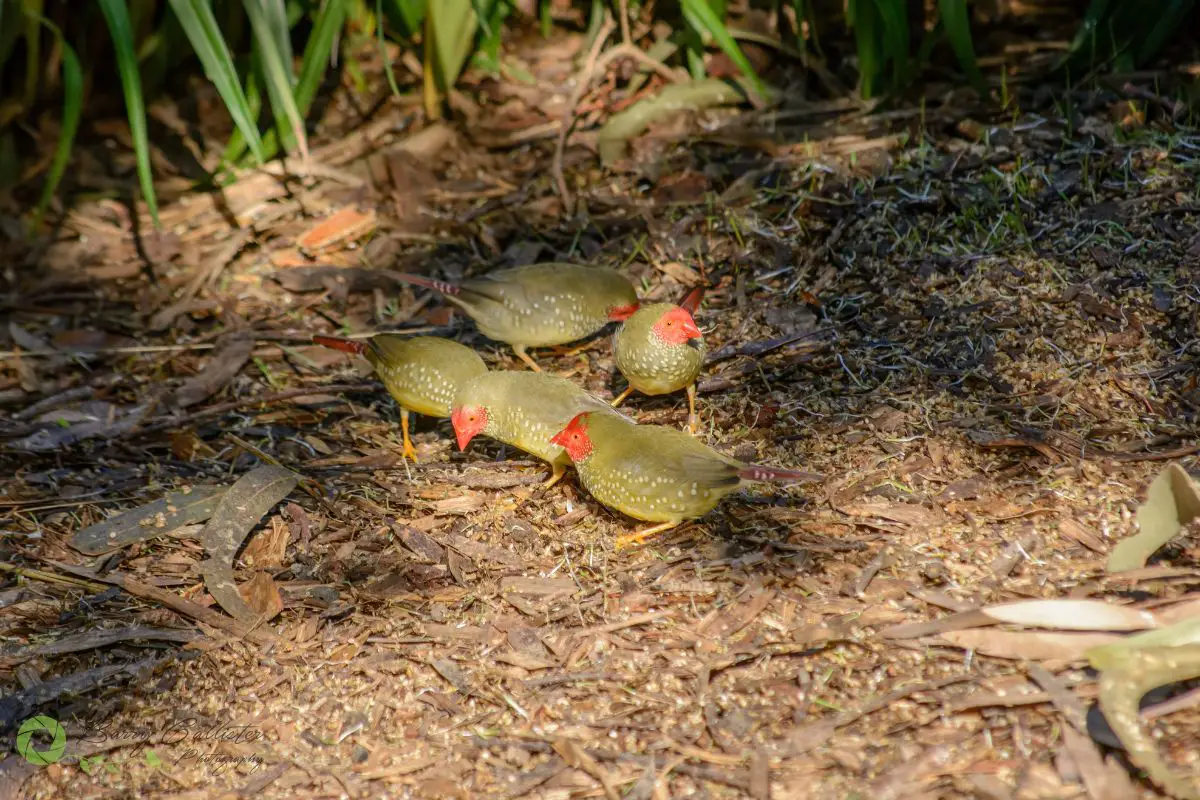
Soon you begin to feel full and recognize the need for a little water before finding a roost for the night. You decide to stick with the other birds as more eyes are always better for finding both food and water. It will also be a good idea to roost with these birds tonight for warmth and safety.
After flying around for a short while, a couple of the other birds notice a small pond below and let you know with a particular chirp. You all fly down and land on the water’s edge.
All of you drink and bathe in the water for a few minutes, making sure one of you is watching for danger at all times. Soon the light begins to fade faster and you decide it’s time to roost.
Find out where birds go at night in the Winter here in this post.
The Sun Goes Down On Another Day

You take the lead this time and let the others know to follow you to a perch that you know of nearby. You know this area well and have various options for night roosts that you know are safe and protected from the elements. You take flight and the others soon follow.
There is a particular shape to the tree you are looking for. You also know the shape of its leaves really well and can spot it from the air. The ground and other trees around it also have a pattern that you remember, kind of like a map that leads you right there.
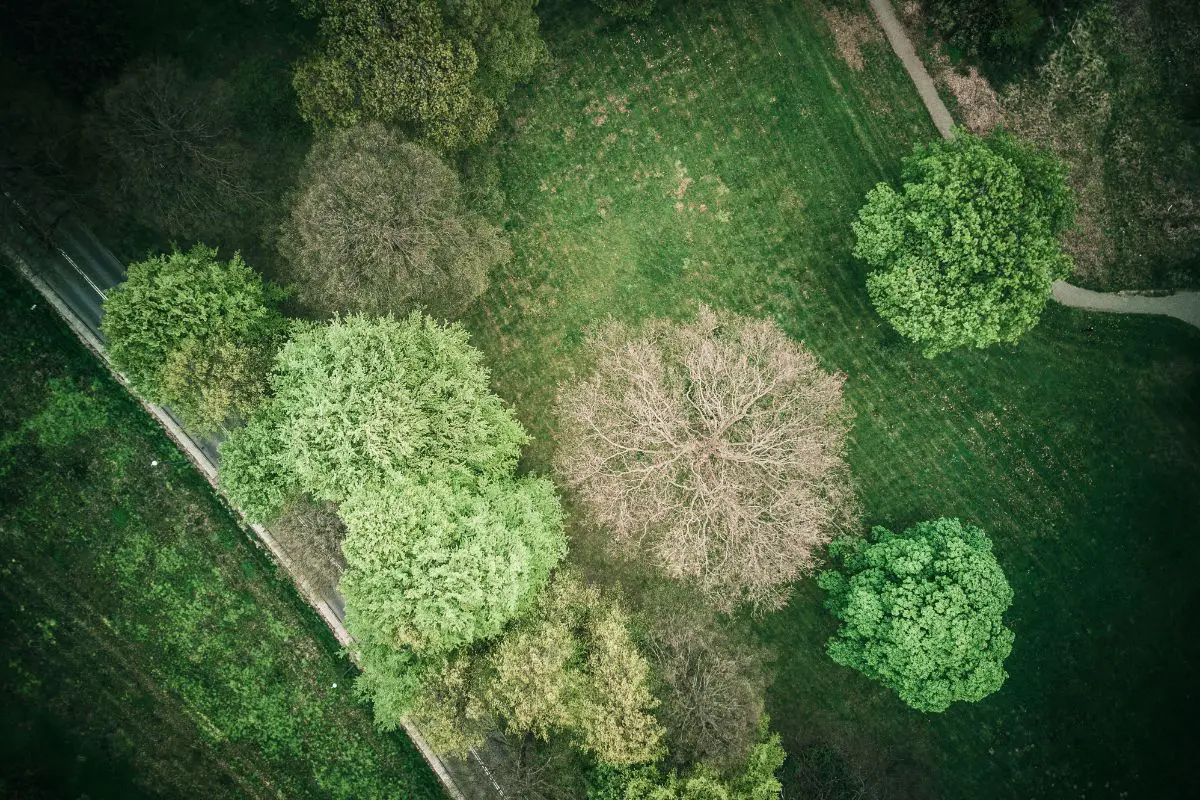
It doesn’t take long to find it and you land on your favorite branch. It’s a long, thick branch high in the tree and has a nice nook close to the tree trunk where you can nestle in and sleep. Tonight, however, you seem to be too late as there are 5 birds already huddled up in the nook and they let you know you and your friends are not welcome.
This is alright as you know of at least two other perches nearby that will do just fine. It’s always best to have different roosts to confuse predators, you don’t want them learning where you are each night.
You and your buddies fly off to a nearby tree that has thick foliage that provides great protection. You land on the top of the small tree and peer down inside to see if there are any birds already roosting here. It’s all clear.
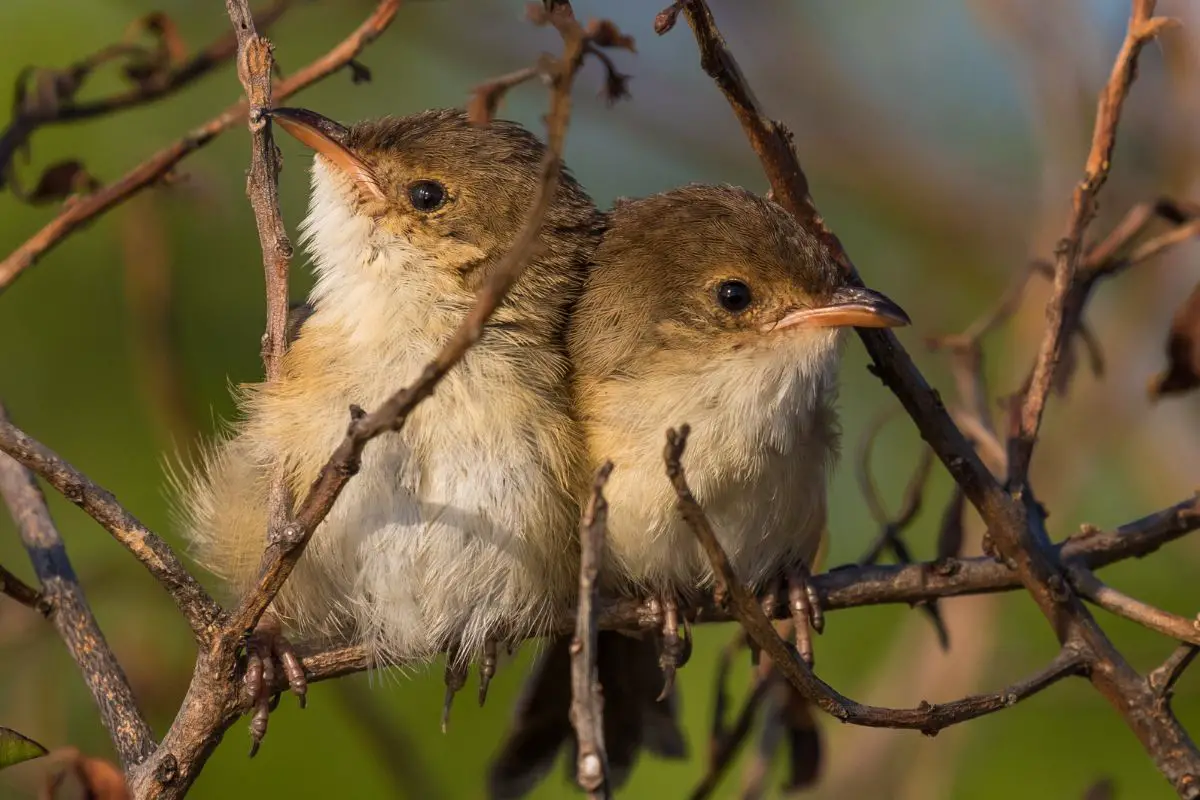
All of you jump down into the tree and snuggle in against the trunk and against each other. As the last light of the day disappears from between the leaves, you fluff up your feathers to trap warm air next to your body, shuffle a little closer to the bird next to you and close your eyes.
Tomorrow will be another day spent in much the same way; searching for food and water, staying safe from predators, and balancing energy in and energy out. This is a day in the life of a bird.
References
- What It’s Like To Be A Bird – David Allen Sibley
- Handbook Of Bird Biology – John W. Fitzpatrick & Irby J. Lovette
